India-Pakistan Crisis Shows the Fragility of Offshore Call Centers
The Kashmir attack and air-space closures imperil India’s BPO hubs. Here's why on-shore AI voice agents are now business-critical.
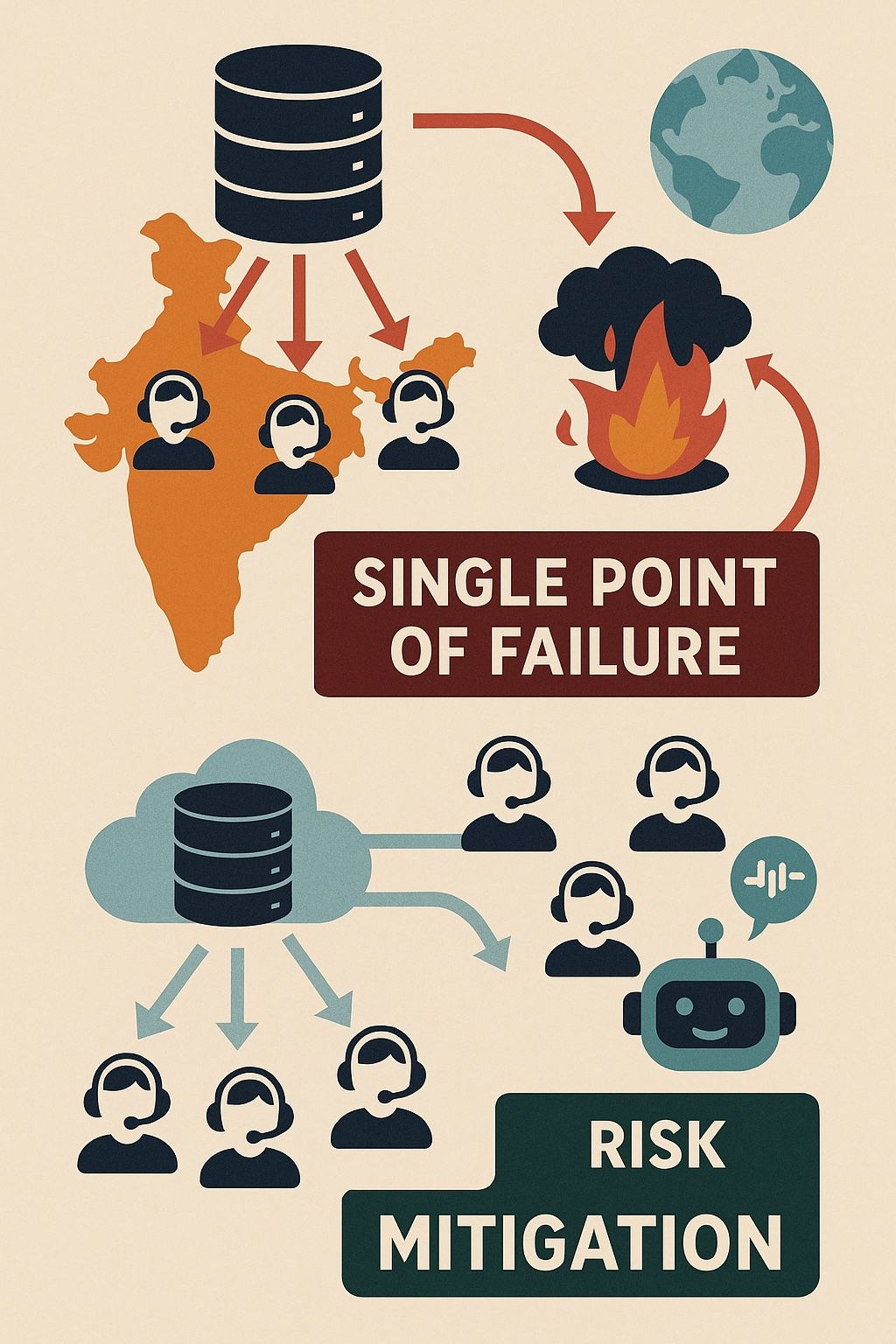
When Geopolitics Unplugs the Help-Desk
On 22 April 2025, gunmen killed 26 tourists in Pahalgam, Kashmir. India blamed Pakistan-based militants; Islamabad retaliated by closing its air-space to Indian carriers and warning of “all-out war.”  
Even a limited stand-off can paralyze Indian business hubs through curfews, telecom blackouts and flight suspensions.
India isn’t just a vendor—it’s the backbone of global enterprise support. Over 80% of S&P 500 companies rely on Indian outsourcing, with nearly 2 million people powering IT-BPM operations and handling more than a third of the world’s voice traffic. That concentration of labor and load makes the system efficient—but dangerously brittle when things go wrong.
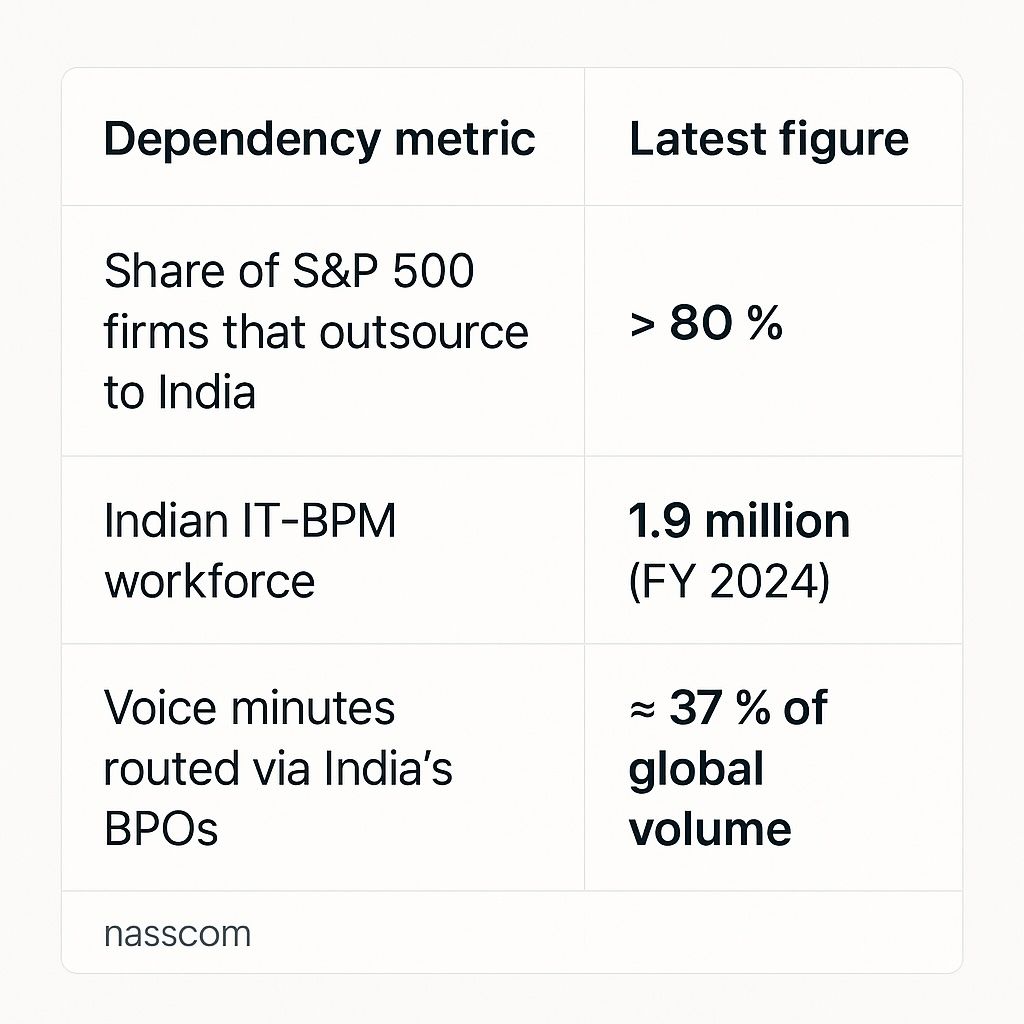
A firefight 7,000 miles away can therefore throttle U.S. carrier help-lines overnight. This exposes a stark reality: global customer support isn’t just about efficiency; it’s fundamentally about risk management. For telcos and SaaS companies, building resilience into customer-experience operations isn’t merely strategic; it’s essential. Over-reliance on distant outsourcing hubs amplifies vulnerabilities, forcing companies to reconsider whether cost savings today might lead to costly outages tomorrow.
A handful of brittle links leave India’s global bandwidth and BPO powerhouse exposed to crippling disruptions:
- • Telecom backhaul — 95 % of India’s subsea capacity lands on a six-kilometre strip of Mumbai beach; an attack or accident there could sever half the country’s international bandwidth. 
- • Repair lag — India owns zero flagged cable-repair vessels; the 2008 Egypt cable cut left India down 80 % of bandwidth for 14 days. 
- • Internet shutdown weaponisation — The 2019 Kashmir blackout lasted 552 days, the longest ever recorded. 
- • Work-force fragility — During the 2020 lockdown, BPOs scrambled to ship laptops and 4G dongles to agents; SLA breaches spiked as VPN congestion and power cuts mounted. 
In critical sectors like telecom and healthcare, even a single day’s outage can trigger regulatory fines, customer loss, and massive backlog spirals.
Here’s how a 24-hour failure compounds into long-term damage:
- 1. Queue inflation: A tier-1 U.S. mobile carrier fields ≈ 55 k daily calls. A 24-hour India blackout at 80 % outsourcing share → 44 k unresolved tickets, forcing IVR deflection or on-shore overtime.
- 2. Regulated-industry penalties: HIPAA or PCI DSS violations triggered by forced work-arounds can cost $50 k–$1 m per incident (SEC filings, 2024 averages).
- 3. Reputational churn: McKinsey finds NPS drops 12 pts after a single ‘long hold’ episode; churn risk doubles for subscription services. 
You don’t need a full-blown war for things to go sideways. Even limited geopolitical flare-ups or domestic policy moves can ripple through India’s call center industry. Here’s a breakdown of the most likely scenarios and how they could play out.
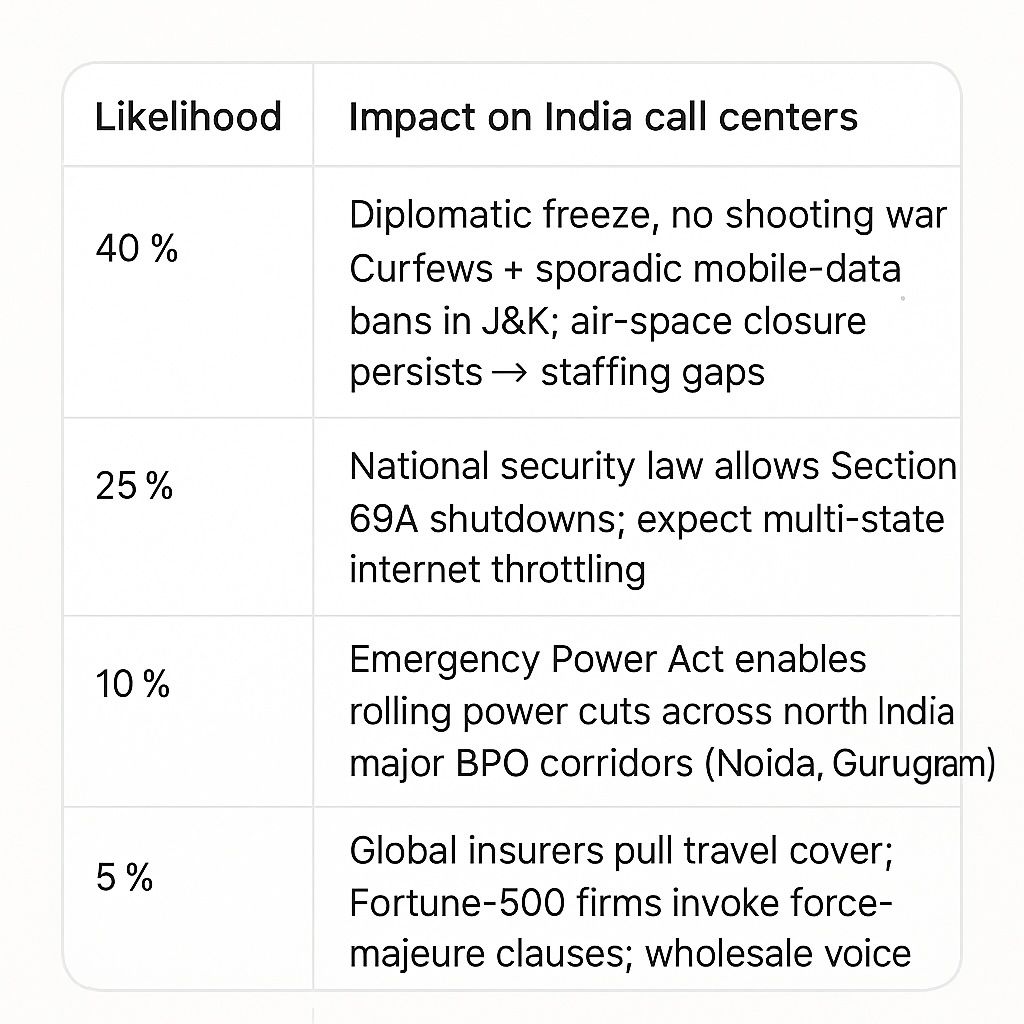
Most outages aren’t technical—they’re geopolitical, infrastructural, or legal. While legacy CX vendors rely on people and patchwork fixes, OpenCall.ai is built for continuity. Here’s how the two approaches compare when things go wrong.
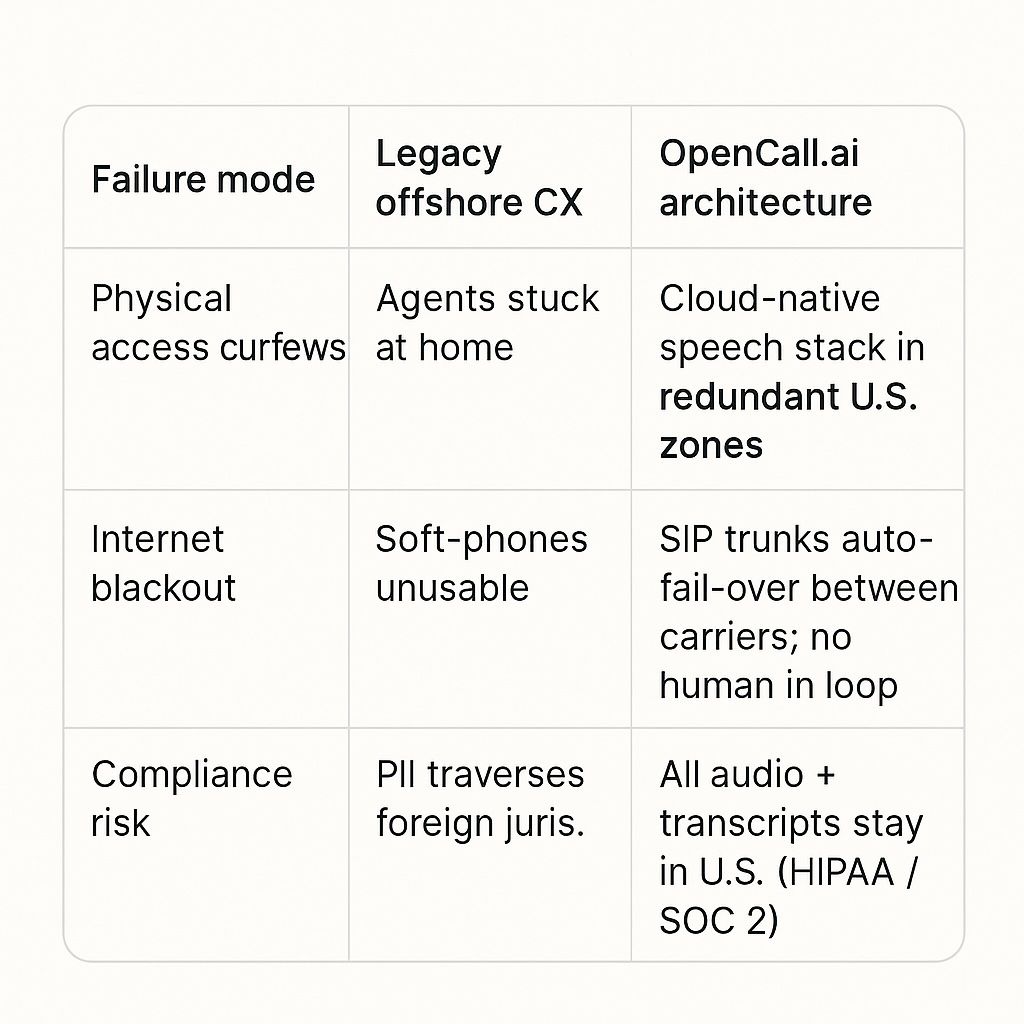
McKinsey’s March 2025 benchmark shows AI agents cut cost-per-call by 50 % and raise CSAT 6 pts. Modeling the 10-day-blackout “severe” scenario:
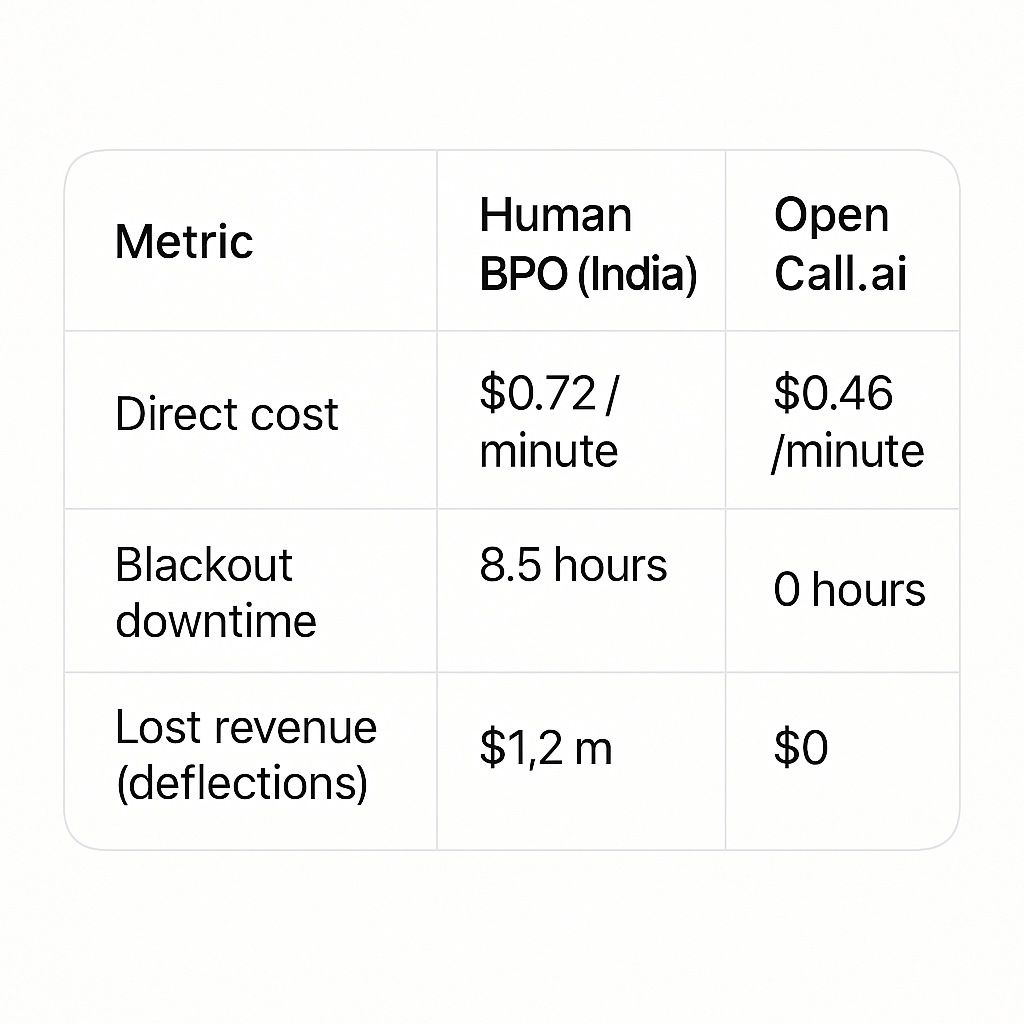
Net benefit: $1.5 m preserved per million inbound minutes during a single disruption event.
The risks are real, but they are also manageable for companies that act early. Blind spots in vendor concentration, service continuity, and data control can all be closed with the right playbook.
Here is a tactical starting point for CX and risk leaders who want to future-proof their operations:
- 1. Audit your exposure. Map what share of your voice minutes terminate in India versus other regions.
- 2. Update your SLAs. Ensure they allow AI agent continuity as a valid fallback when human agents go dark.
- 3. Simulate disruption. Run a 48-hour drill where 30% of traffic shifts to OpenCall.ai and track CSAT impact.
- 4. Lock down your data. Migrate call recordings to U.S. storage before new jurisdictional rules make it harder.
⸻
India’s BPO powerhouse is a single choke-point for global customer support. The Kashmir flare-up shows how quickly that point can seize. AI voice agents—deployed in redundant on-shore clouds—aren’t just a cost play; they’re an existential risk-mitigation layer for any brand benefiting from 24 × 7 availability.
👉 Book a demo to see how OpenCall.ai can weather the next geopolitical shock without your customers ever hearing a busy-tone.

